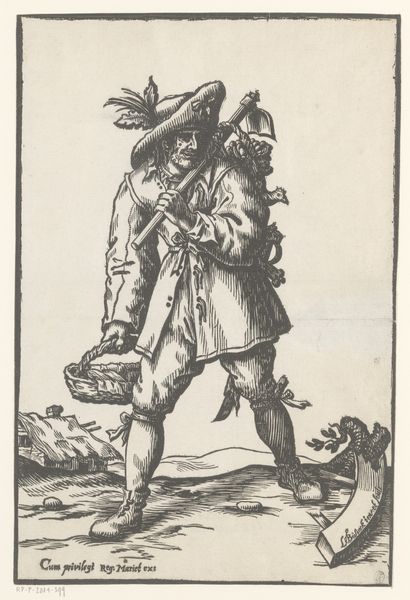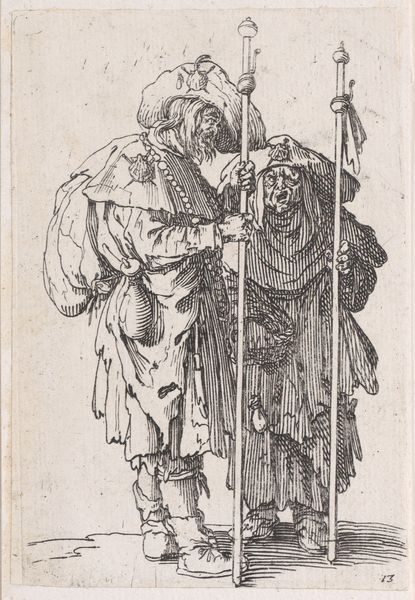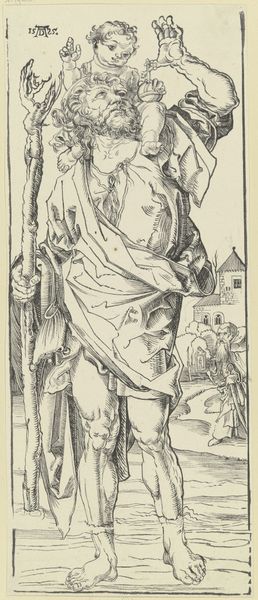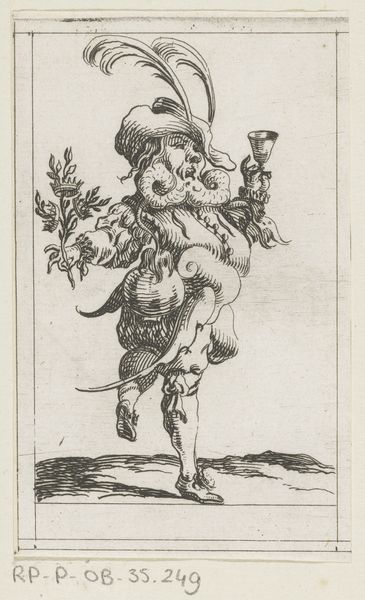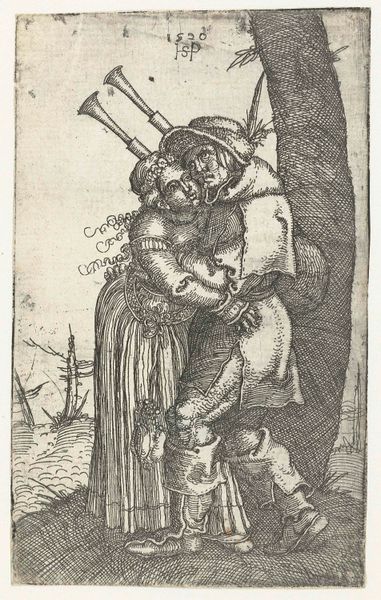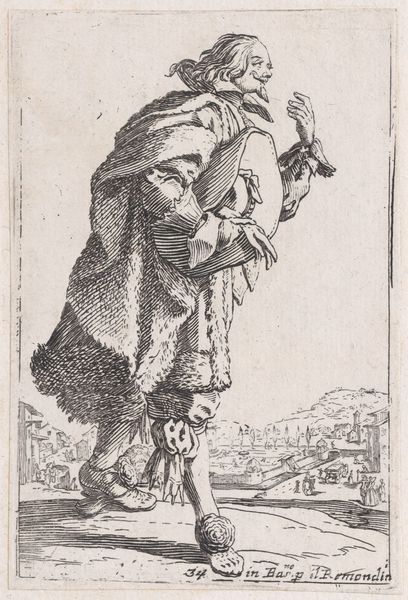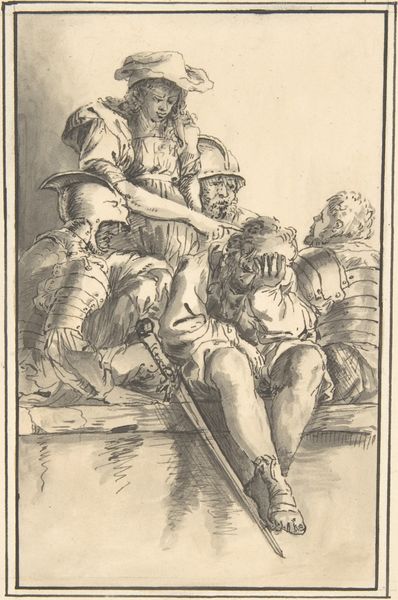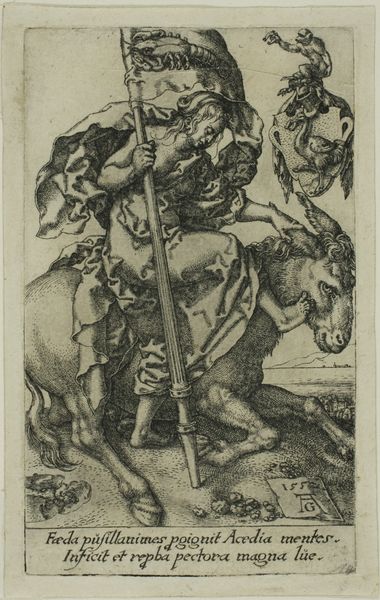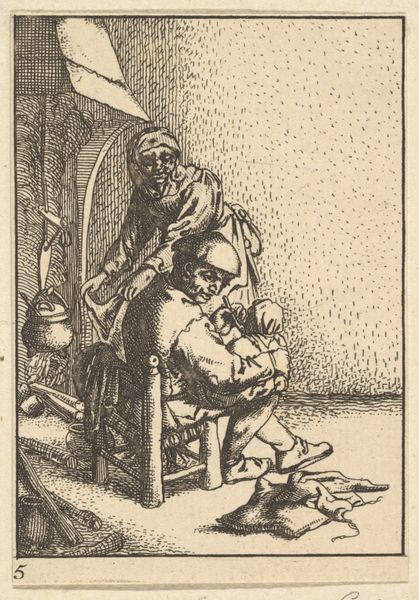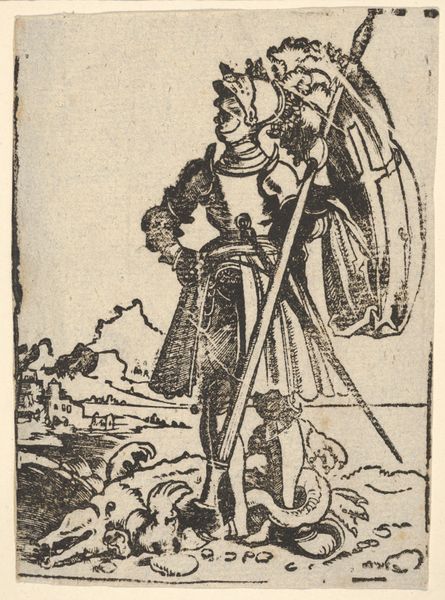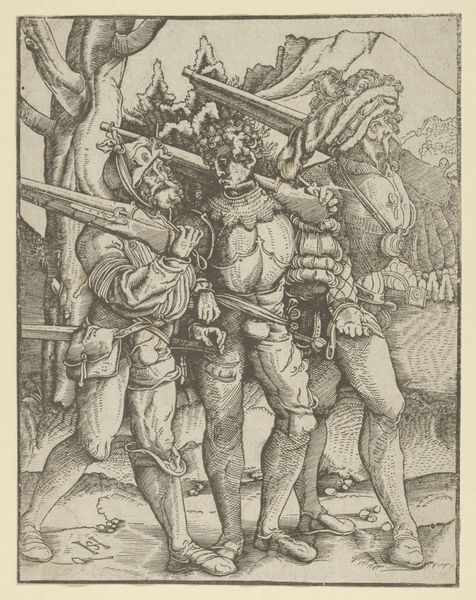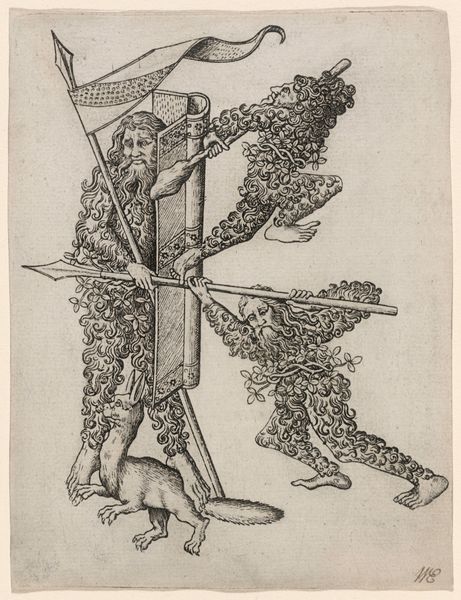
A Silver Statuette of St. Christopher, from the Wittenberg Reliquaries 1472 - 1553
0:00
0:00
print, ink
#
narrative-art
# print
#
figuration
#
ink
#
northern-renaissance
Dimensions: Sheet: 6 1/8 × 2 3/4 in. (15.5 × 7 cm)
Copyright: Public Domain
Curator: Welcome. Here we see “A Silver Statuette of St. Christopher, from the Wittenberg Reliquaries," made with ink in the style of the Northern Renaissance, circa 1472-1553 by Lucas Cranach the Elder. Editor: My first thought is how weighty this figure looks, both physically and perhaps spiritually. There is a sense of immense burden conveyed through the dense linework and the subject’s hunched posture. Curator: The print showcases Cranach's mastery of line, doesn't it? Note how the dense, cross-hatched shading creates a palpable sense of form and weight, giving dimension to the saint and the Christ Child. Semiotically, the river represents spiritual trials, and the weight represents human sin. Editor: Indeed, and consider the political implications during the Reformation. By portraying St. Christopher, Cranach is engaging in visual advocacy. This wasn’t just religious art; it was a political declaration during a time of upheaval, especially since this print depicts St. Christopher carrying a child across water to safety, echoing themes of rescue. Curator: A point well taken. But even stripped of that context, it’s difficult to ignore the balanced composition, no? The placement of the figure and staff, how they both align to give the viewer’s eye a vertical guide that leads directly to the focal point of the work: The Christ Child, which leads down to the weighted stance of the older Saint, forcing you to confront both figures simultaneously. Editor: Though this narrative-focused artwork tells a classical story, I'd argue Cranach's approach to figuration challenges existing norms. The depiction isn't idealized, as Christopher is presented as a working-class man; this is important when we discuss concepts of equality within spiritual representation during the Northern Renaissance. The use of such a specific and detailed art print democratized the availability of such imagery. Curator: So true; his embrace of a relatable figure lends this a populist dimension—especially important considering Cranach’s stature in the Reformation. One notices that balance of power in even such a seemingly benign artistic object! Editor: Exactly. Analyzing how Cranach leverages visual symbolism—a baby raising his hand in perceived divine favor, juxtaposed with the elder Saint bearing his burden, informs a more thorough, cultural understanding of art during this tumultuous period of history. Curator: Absolutely, our readings today demonstrate how close examination and cultural awareness can unlock deeper meanings within artwork—expanding not just our visual understanding, but our connection with it as well. Editor: Ultimately, appreciating the multifaceted nature of art enhances its capacity to ignite new critical dialogues even centuries after its creation.
Comments
No comments
Be the first to comment and join the conversation on the ultimate creative platform.
